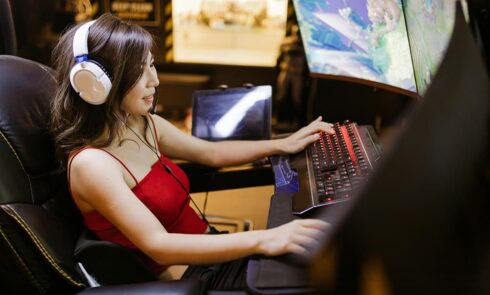Drifting is a thrilling and technical motorsport that combines speed, style, and precision. In the world of online racing games, mastering the art of drifting requires more than just skillful driving; it also involves setting up your car correctly. Whether you’re a beginner looking to get started or an experienced player aiming to fine-tune your setup, understanding the key elements of car tuning is essential. This guide will walk you through the essential aspects of setting up your car for drifting, helping you become the drift king, just like navigating the challenges in yohoho io.
1. Choosing the Right Car
Before diving into the specifics of car setup, selecting the right vehicle is crucial. Not all cars are ideal for drifting, so it’s important to choose one that suits your style and skill level. In general, rear-wheel-drive (RWD) cars are the most popular for drifting due to their ability to easily break traction and maintain controlled slides. However, some all-wheel-drive (AWD) cars can also be used effectively with the right tuning.
2. Suspension Setup
The suspension is one of the most critical components in a drift car setup. It affects how the car handles and responds to inputs. Here’s what to focus on:
- Stiffness and Damping: A stiffer suspension setup helps reduce body roll and keeps the car stable during high-speed drifts. Adjusting the damping (both compression and rebound) can fine-tune how the car absorbs bumps and transitions between drifts.
- Camber: Negative camber (wheels tilted inwards) can improve grip and stability during cornering. For drifting, a moderate negative camber on the front wheels helps with initial turn-in, while the rear wheels can have less camber to maintain a balance between grip and slip.
- Toe: Toe angle refers to the direction the wheels point relative to the car’s centerline. For drifting, a slight toe-out on the front wheels can improve responsiveness, while a slight toe-in on the rear wheels helps with stability during transitions.
3. Tire Selection and Pressure
Tires play a vital role in how a car behaves during a drift. Selecting the right tires and setting the correct pressure can make a significant difference.
- Tire Compound: Softer compounds provide more grip but wear out faster, while harder compounds offer less grip but are more durable. For beginners, a medium compound is a good starting point, providing a balance between grip and slide.
- Tire Pressure: Lowering tire pressure increases the contact patch, providing more grip, while higher pressure reduces the contact patch, making it easier to initiate drifts. Experiment with different pressures to find the optimal balance for your driving style.
4. Power and Drivetrain
Power delivery is crucial for maintaining control during a drift. Tuning the engine and drivetrain can help achieve the desired balance between power and control.
- Power Output: Increasing the car’s power output can make it easier to break traction and initiate drifts. However, too much power can make the car challenging to control. It’s essential to find a power level that matches your skill and the car’s capabilities.
- Differential: A limited-slip differential (LSD) is a must-have for drifting, as it helps distribute power evenly between the rear wheels. This prevents one wheel from spinning excessively and losing traction. Adjusting the differential’s lock percentage can fine-tune how the car behaves during drifts.
5. Weight Distribution and Balance
The weight distribution of a car affects its handling characteristics. For drifting, a balanced setup is key.
- Weight Reduction: Reducing the car’s weight can improve responsiveness and acceleration. However, maintaining a good front-to-rear balance is crucial to prevent understeer or oversteer.
- Ballast: Adding ballast can help adjust the car’s weight distribution. For example, placing ballast towards the rear can help improve rear-end stability, while adding it to the front can enhance turn-in response.
6. Brakes and Handbrake
Brakes are essential for controlling speed and initiating drifts. A well-tuned brake setup can make a significant difference in drift performance.
- Brake Balance: Adjusting the brake balance can help fine-tune how the car responds to braking inputs. A front-biased setup can help with turn-in, while a rear-biased setup can make it easier to initiate drifts.
- Handbrake: A good handbrake is crucial for initiating drifts, especially in tight corners. Ensuring that the handbrake is responsive and reliable is essential for consistent performance.
Setting up your car for drifting in online racing games requires a deep understanding of various tuning aspects. From suspension settings and tire choices to power delivery and weight distribution, each component plays a crucial role in how the car performs on the track. By experimenting with different setups and finding what works best for your style, you can master the art of drifting and dominate the competition, much like mastering the challenges in yohoho io.
Remember, becoming a drift master takes time and practice. Don’t be afraid to tweak your setup and try new things. With patience and dedication, you’ll be sliding around corners with style and precision in no time.

